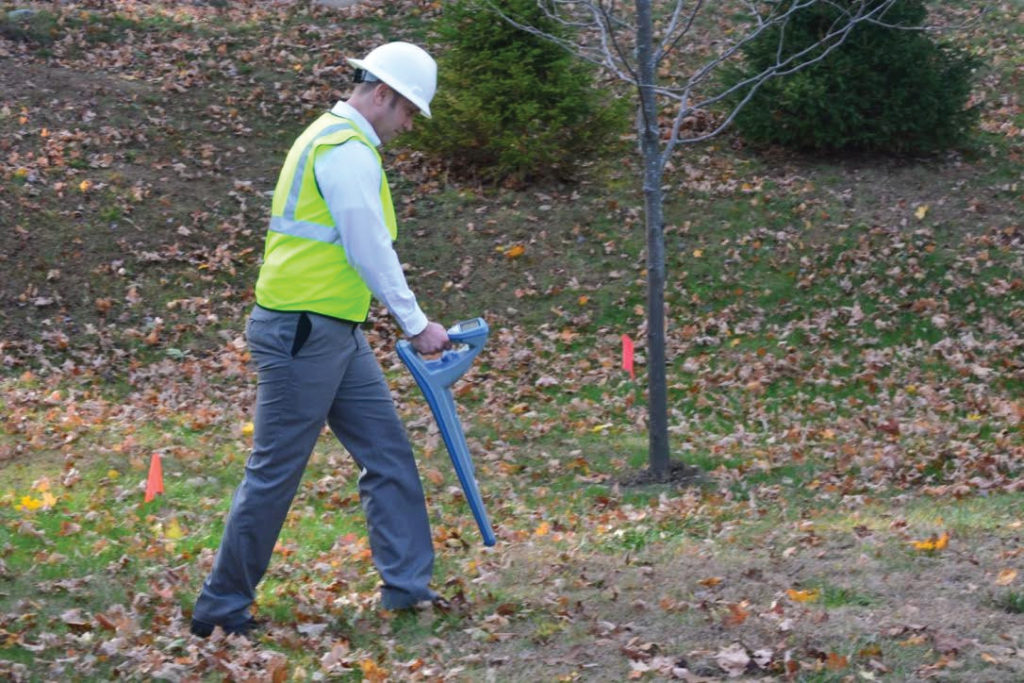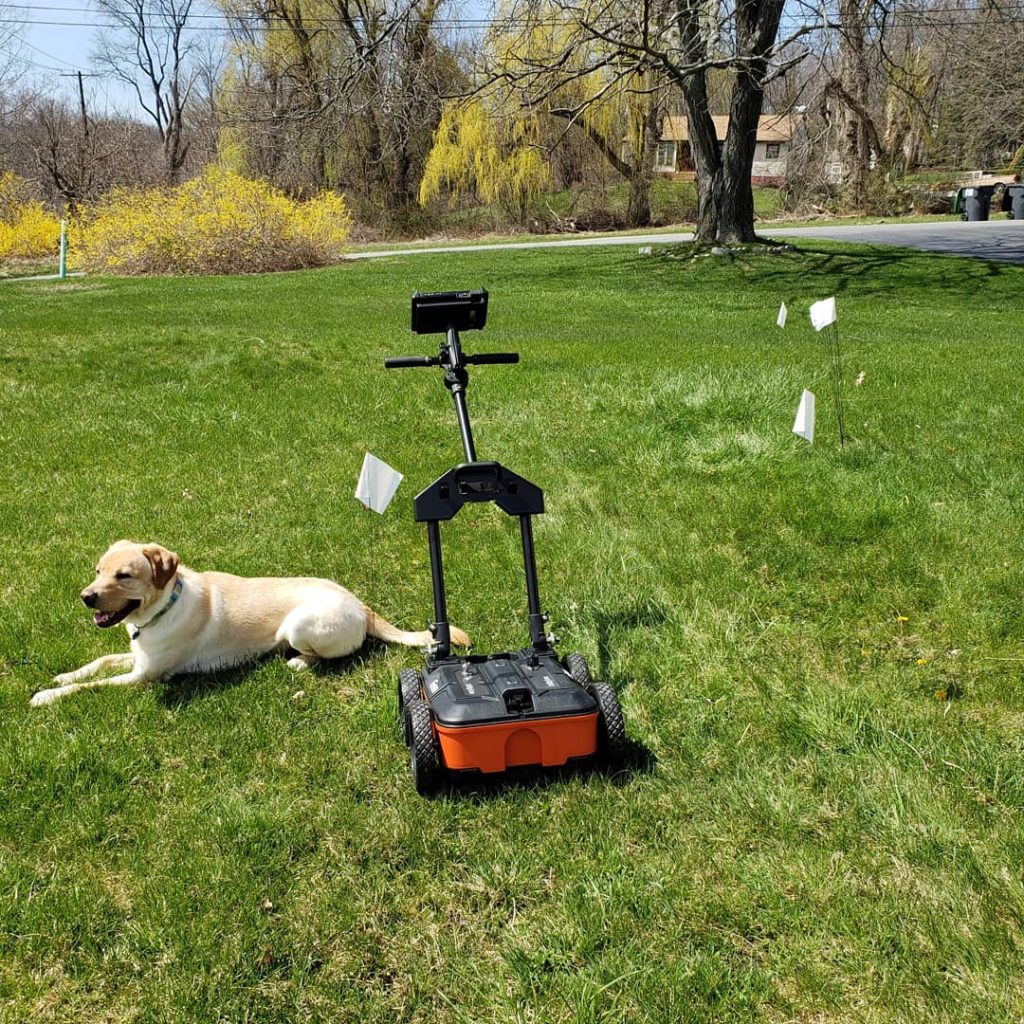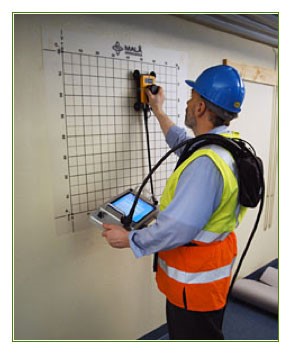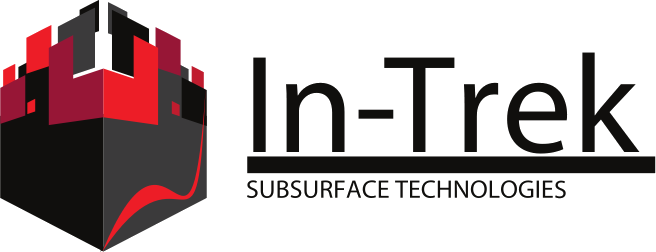Services We Provide
Electromagnetic Locating Instrument

Most utilities are located using electromagnetic underground utility locators. The equipment consists of two components: a transmitter and a receiver to pick-up the signal. There are 3 popular methods in which the EM locating instrument is used. The first is a Direct Connection (conductive), which is the preferred method used by underground utility locators. It uses electromagnetic impulses to locate lines. It is the most accurate method that provides the greatest number of options for locating a buried utility line. The transmitter is attached directly to a utility access point. The transmitter has multiple frequency transmissions that are detected by the receiver to trace the signal traveling along the utility.
The second is Induction. Induction is when there is no access point to the utility. The transmitter is placed on the ground above where the probable utility location is, and then the utility is traced and marked the same as with a conductive connection.
Sonde & duct rods: A locating sonde is used when there is entry access to buried pipes,
In the case where the utility or pipes are non-metallic and cannot carry an EM signal. The sonde transmits its own frequency which can be traced by the receiver. Applications include conduits, drain and sewer lines.
Ground-penetrating Radar
Ground penetrating radar is a geophysical method that uses radar pulses to image the subsurface. This nondestructive method uses electromagnetic radiation in the microwave band (UHF/VHF frequencies) of the radio spectrum and detects the reflected signals from subsurface structures. GPR can have applications in a variety of media, including rock, soil, ice, fresh water, pavements and structures. In the right conditions, practitioners can use GPR to detect subsurface objects, changes in material properties, and voids and cracks.
As the GPR instrument is rolled along the ground, the received signal is shown on the screen, allowing a trained operator to determine the location of buried oil tanks, cesspools, or other objects.
Standard electromagnetic induction utility locating tools require utilities to be conductive. These tools are ineffective for locating plastic conduits or concrete storm and sanitary sewers. Since GPR detects variations in dielectric properties in the subsurface, it can be highly effective for locating non-conductive utilities.

Archaeology & Forensics

Archaeologists and Forensics experts around the world rely on ground penetrating radar (GPR) as key tool for non-invasive site investigation. Archaeologists rely on it for mapping out excavations and locating sensitive cultural artifacts for preservation or avoidance. GPRs has been their most reliable tool in this field for over 50 years.
Law enforcement has also made use of them in various ways. With GPRs they locate clandestine burials as well as buried evidences such as caches of drugs, money and weapons. This makes GPRs an essential tool for forensic specialists providing them needed information regarding subsurface site investigation. GPRs have even been used to locate soldiers and civilians killed in war-torn zones.
Assisting in disaster prone areas is another key element of GPRs. After an earthquake, many people may be buried alive, hence requiring fast and accurate reading for search and rescue workers. Modern GPR signals penetrate soil, snow and construction materials to varying depths, with it, even slight movements from the victim can be detected over time, pinpointing exactly where the victim may be.
Concrete Scanning with Radar
Concrete Scanning equipment using radar has a unique and much needed purpose for scanning concrete walls, floors, columns and other concrete made structures. Accurately identifying the position and travel of conduit, post-tensioning cables, rebar and other subsurface materials is exceedingly critical when drilling, coring or cutting concrete.
Using similar technology as Ground Penetrating Radar, the hand held concrete scanner it identifies distinct and common targets. Concrete, one of few most difficult surfaces to penetrate safely, but with experience and being effective is always key in performing an accurate scan. When drilling in commercial and industrial locations, accurate detection of electrical conduits is essential in preventing safety risks, power outages, and costly damages.
We are able to locate air pockets and voids hidden in the sub-grade or below concrete or asphalt surfaces. A grid marks the work surface, with areas indicated safe for drilling while maintaining integrity to structures and minimizing damage or replacement, ensuring that clients can conduct core drilling and repairs without incident, injury, or delay. All while being efficient.

Cable Fault Locators

Cable fault location is the process of locating periodic faults, such as insulation faults in underground cables, and is an application of electrical measurement systems. Issues with this can occur due to natural shifting of the ground, or even by a misplaced shovel stroke. In this process, mobile shock discharge generators are among the devices used to locate the fault on the cable so as to repair it.
Acoustic Leak Detection
A leak in a water line can very quickly become an expensive liability. Acoustic leak detection technology is an ideal way to locate the leak before excavation is done so as to minimize repair costs. With any type of leaking pipe, be it gas or liquid, it produces a faint sound that is virtually undetectable. With Acoustic leak detection equipment, that sound can be amplified while reducing background noises. This allows us to detect exactly where the leak is coming from so that it can be repaired.
